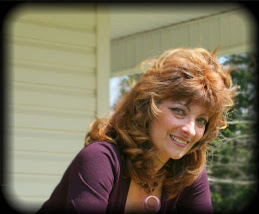You've fine-tuned that manuscript and now you're beginning to think it's publish-worthy. That thought brings you to a crossroads. Should you try to find a publisher on your own or should you try to land a literary agent?
There is no right or wrong answer. Much of it depends on your personality, your connections, your head for business, and whether or not your story is likely to grab an editor's attention from the slush pile.
For the unenlightened, the term "slush pile" refers to the thousands of queries, proposals, and manuscripts an editor or agent receives every single day from prospective authors just like you. From the months spent in your writing fog, you may emerge with the idea that you are among the very few who would attempt such an overwhelming task like writing a book. However, there are millions just like you, all vying for those elusive spots in the published world. And those hopeful submissions pile up every day on the desks of overworked publishing professionals.
One obstacle you will find if you begin to submit your work to publishing houses is that not many of them accept unsolicited queries from unknown writers. One reason they do this is to cut down on the enormous workload and the number of staff it takes just to weed through the junk, hoping for a treasure. There are, however, a few who will still accept your query out of the blue, so if you choose this route, submit to those houses.
But do your homework first! The
internet makes is so easy now to research a publisher: what types of books do they publish, how many pages is their average, who are their authors, etc. Don't, for example, submit your erotica fantasy novel to Steeple Hill--a Christian romance publisher with strict online guidelines about content. There are no excuses for not doing your homework first and to fail to do so will earn you not only a quick rejection, but muddy your name in the event you come up with something acceptable later.
The advantages of this "do-it-yourself" approach are that if you do land a contract, you get to keep all the money you earn. You work directly with the publisher, rather than going through an agent who will keep 10-20% of your earnings.
The advantages of finding an agent who will represent you are numerous and signing with one can be almost as elusive as signing with a publisher. Agents are equally bombarded with hopefuls and have slush piles of their own. Again, do your homework before you submit to an agent! Read their websites, their blogs, their preferences and submit your proposal EXACTLY the way they ask you to. Being "creative" in your submission will only earn you a flat rejection.
Agents are experts in navigating the confusing world of publishing contracts, foreign rights, advances, royalties, etc. and unless these things are second nature to you, an agent will take this business load off your shoulders. Most writers prefer to stay in their caves and write. We don't like the business end of it and often, that naivete results in the writer being taken advantage of by a publisher. An agent knows when you are offered a good deal and has the negotiating skills to garner you the best deal possible.
The
internet abounds with agent blogs filled with information, so there is no excuse for not educating yourself about each agent before you submit your work. They each have their own preferences such as: query vs. full proposal, email vs. snail mail, and genres of books represented.
One word of caution: if you think you may want to find an agent, it's best not to submit to publishers on your own first. That only cuts down on the number of editors your agent can submit to once you've found one. You cannot resubmit a manuscript once it's been rejected. Your agent will have the ability to present your work in the best possible light, so rein yourself in and refrain from submitting on your own until you land that agent.



